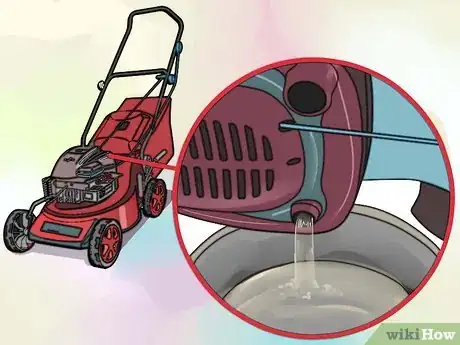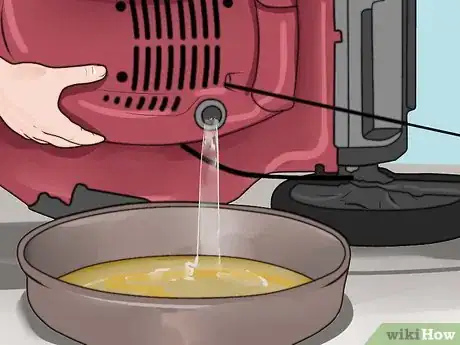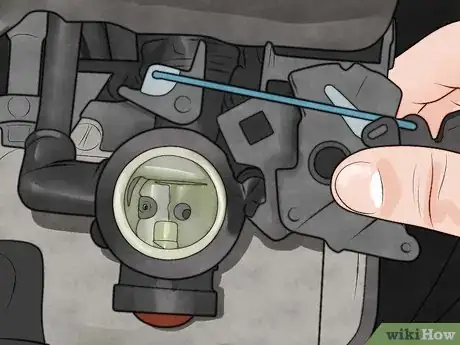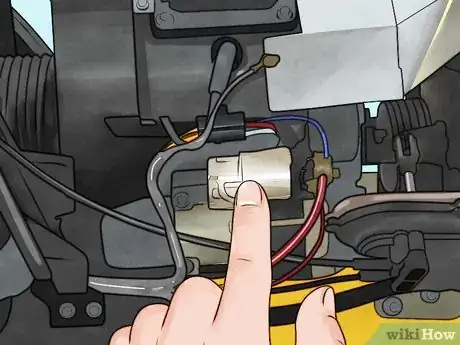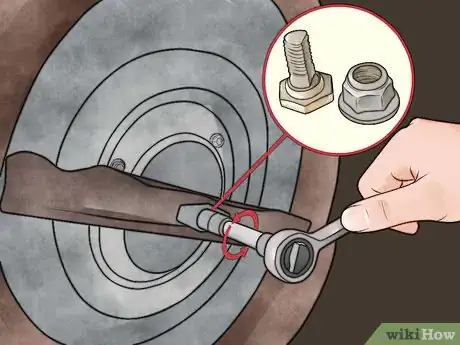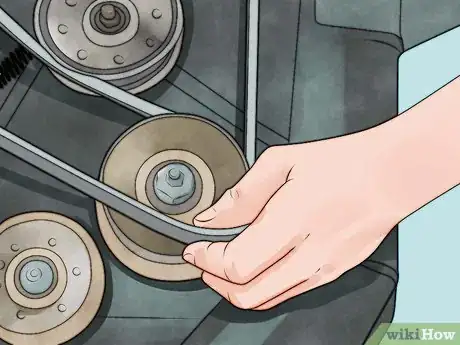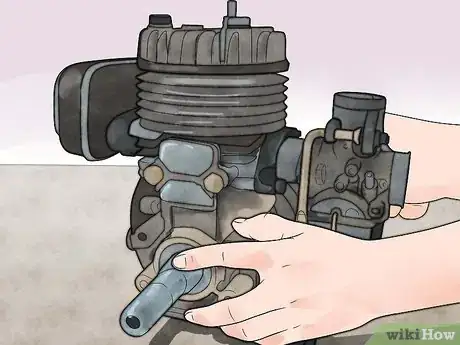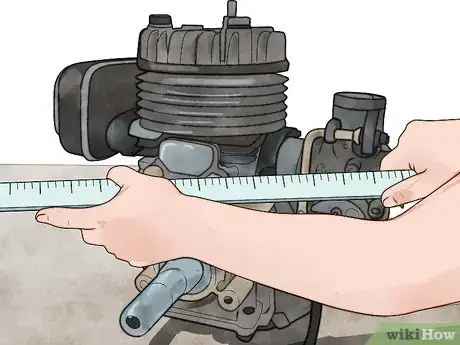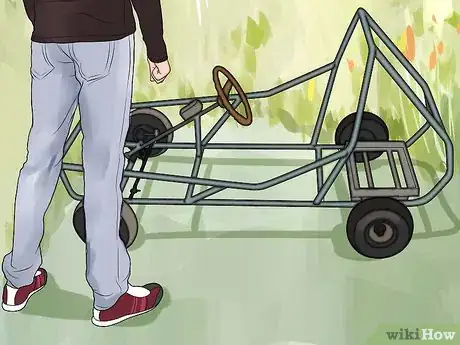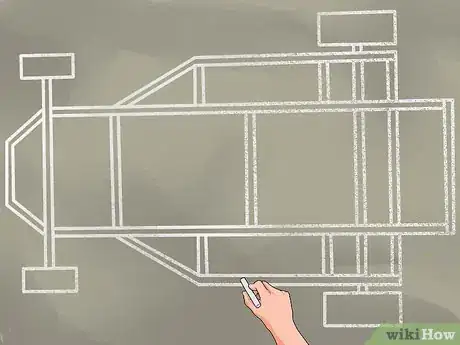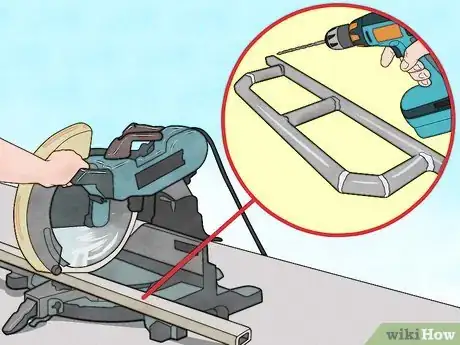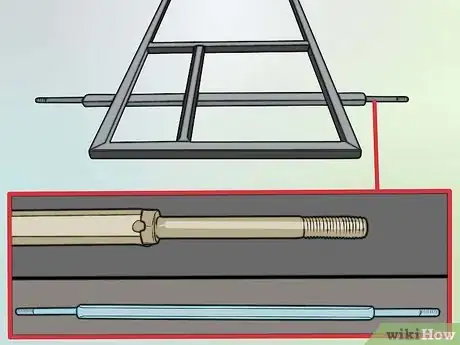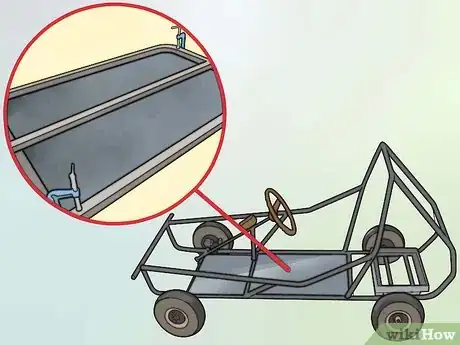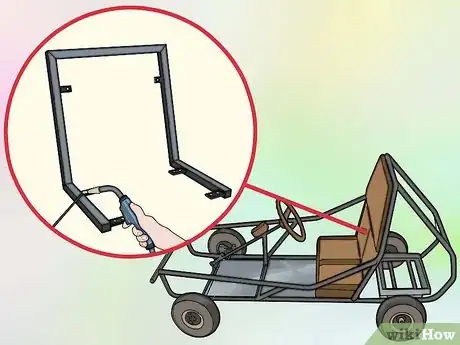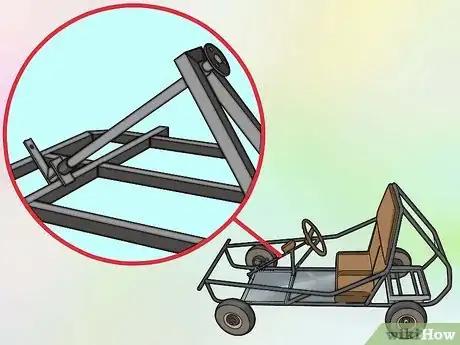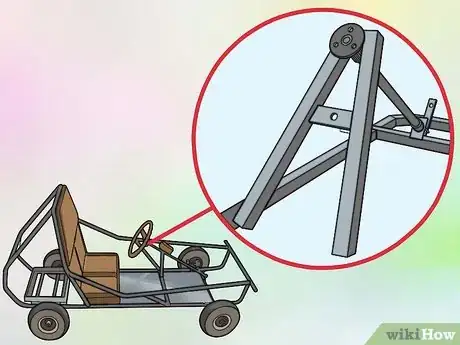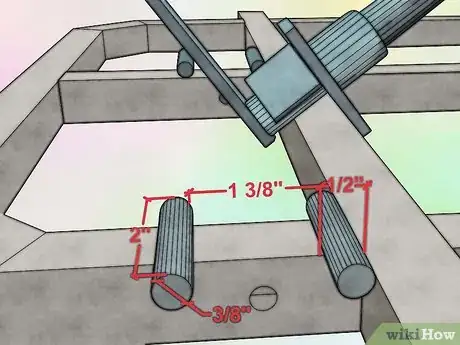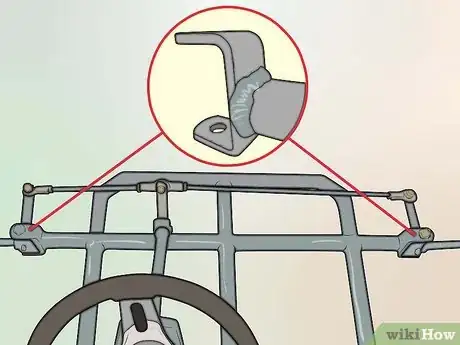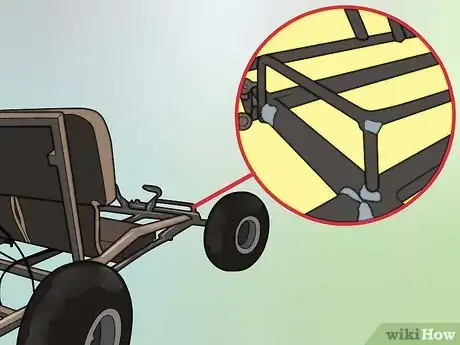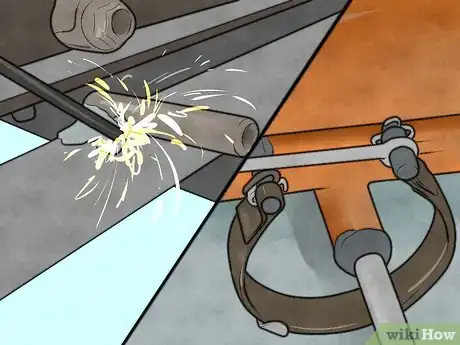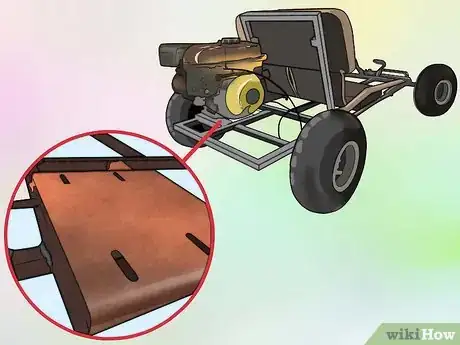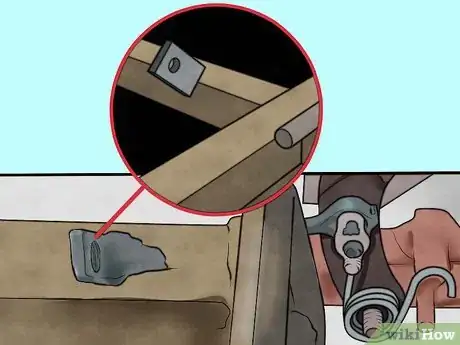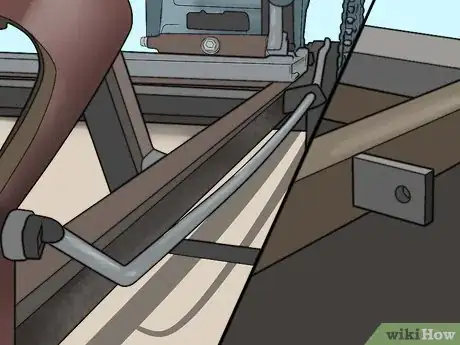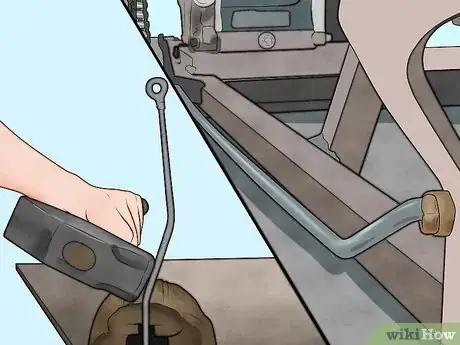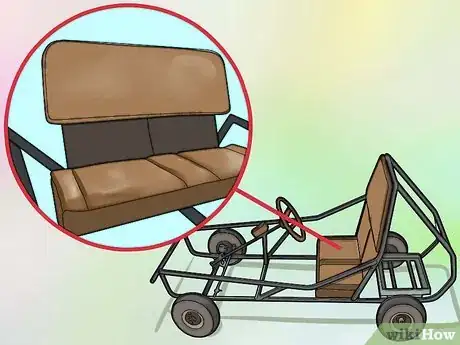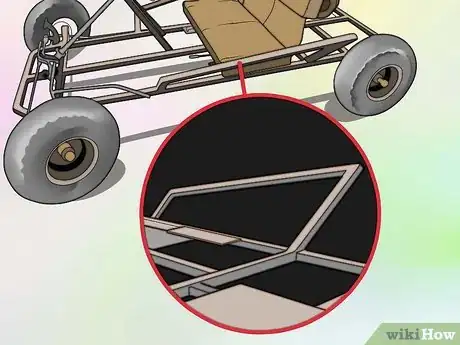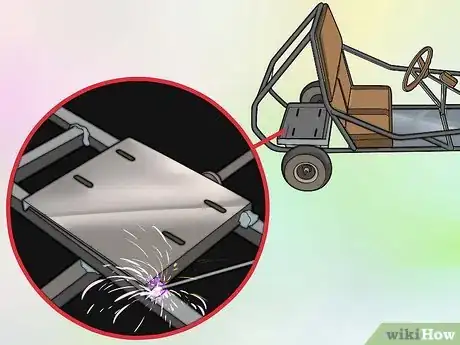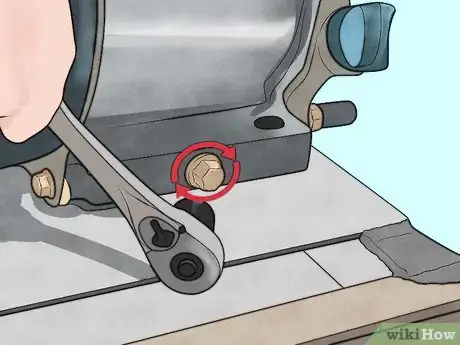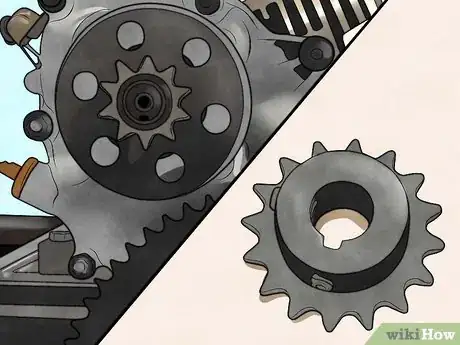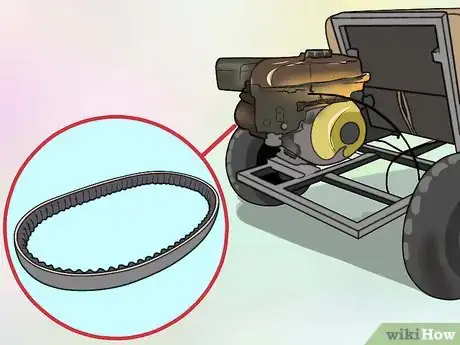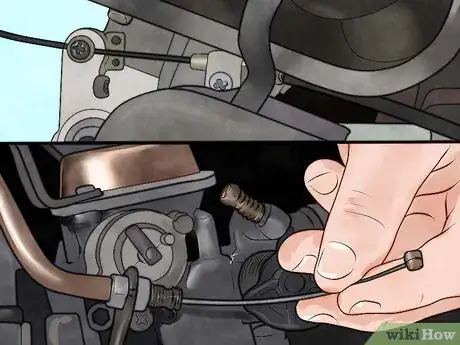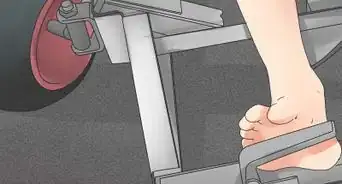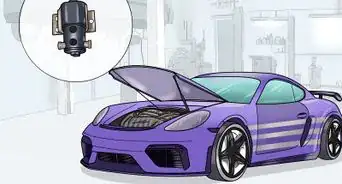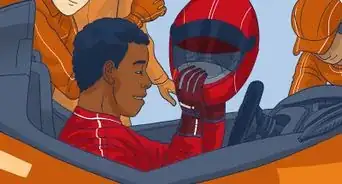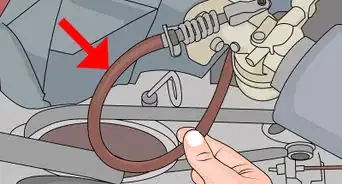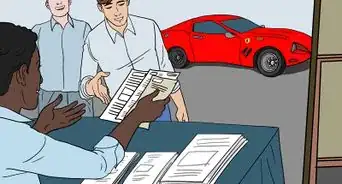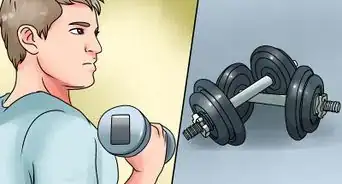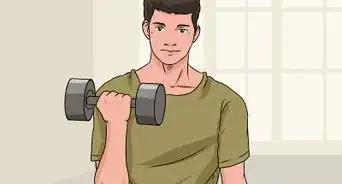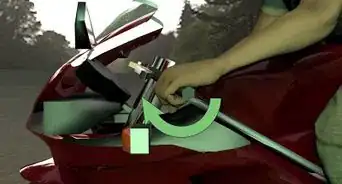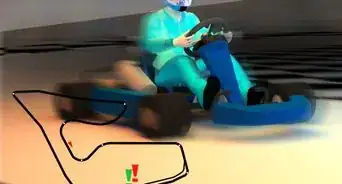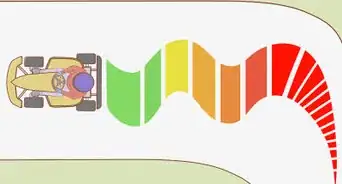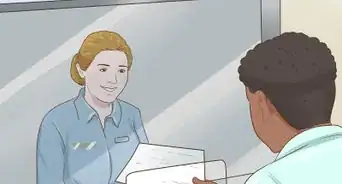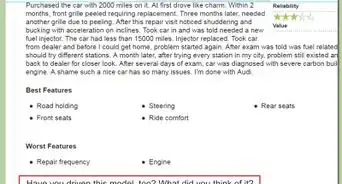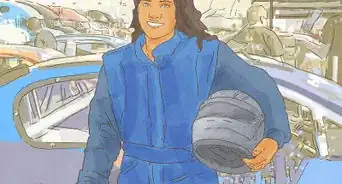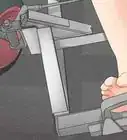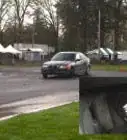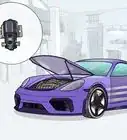wikiHow is a “wiki,” similar to Wikipedia, which means that many of our articles are co-written by multiple authors. To create this article, 52 people, some anonymous, worked to edit and improve it over time.
There are 9 references cited in this article, which can be found at the bottom of the page.
This article has been viewed 664,104 times.
Learn more...
Though go-karts traditionally use horizontal mount engines, with a little modification, you can install a vertical shaft lawnmower engine to be the driving force behind your homemade racing machine. Taste again the speed, freedom, and exhilaration of the open road when you convert your lawnmower engine into the go-kart you've always wanted.
Steps
Removing a Lawn Mower Engine
-
1Drain the oil. Depending on the engine you are using, you may need to use a pair of pliers to disconnect the spark plug wire to remove the oil drain plug.[1] Use a suitable receptacle to drain the oil into, and wipe any spills.
- It's best to drain the oil from an engine when it's slightly warm, as the heat allows for a faster flow than when cold.
-
2Drain the gas. Loosen the fuel hose clamp before you start draining your fuel. You can do so by tracing the route of the fuel hose from the engine to the base of the gas tank. Notice where the hose attaches to your lawn mowers carburetor.[2] Using your pliers, squeeze the clamp loose and slide it upwards on the hose. Now you can detach the hose and drain your fuel into a bucket.Advertisement
-
3Locate the throttle linkage. You can usually find the throttle linkage beneath the carburetor. There will be a cable that should connect to the throttle, and by removing the screw that holds the cable in place, you can easily remove the throttle linkage.[3]
-
4Find the starter. This part is on the side of the engine and will have the shape of a small can.[4] Electric-start lawn mowers will have a red battery cabled attached. Use a wrench to unfasten the cable from the starter.
-
5Remove necessary nuts and bolts. At the base of your mower engine is the mower house, which is where the engine is seated normally. Using your wrench on the bolt and another to hold still the nut below the mower house, unscrew the bolts holding your engine in place.
-
6Take off the drive belt. You will find the drive belt on pulley on the crankshaft beneath the engine. Incline the engine slightly forward and pull the drive belt from its pulley.[5]
-
7Remove the engine. Taking the engine firmly with both hands, lift the engine from the mower house and place it carefully off to the side in a safe place.
Preparing to Install
-
1Measure the size of your engine. You will need a go-kart frame that is capable of housing the size and weight of your engine. Most 5 to 7 horsepower engines will fit a standard size kart.[6] The vertical shaft engine you choose can be from a riding mower or a push mower, either will work for your go-kart.
- Larger engines in the 13 to 22 horsepower range, which you can find on riding mowers, may destroy the transmission or kart.[7]
-
2Pick a suitable go-kart frame. You will want one that can support both your vertical shaft engine and lawnmower gearbox comfortably. Your gearbox should will need to have non-trans axle set-up.
-
3Draw out a true to size basic design of your frame with chalk. This will give you a better sense of the dimensions that will be comfortable for your frame.
- Most frames have a width that varies between 1/3 and 2/3's the wheelbase of your go-kart, with wider models giving better stability.[8]
Assembling the Frame
-
1Cut bumper frame and drill holes for tube padding. You should round the edges of your bumper by connecting the vertical pieces that link to your frame and the horizontal piece parallel to the back piece of your frame with a short connector cut on a 22.5 degree angle. Drill holes for your tube padding into the back of your bumper.
- Drill 5/16" centered holes through your bumper padding at 1 1/8" from the padding end.
-
2Install the axle. Cut a 1" x 1" section of square tubing and weld bolts to the ends. A 6" bolt will go on the driver's side of your kart, while a 4" bolt will be on the passenger side. Weld the axle underneath the base of the frame.
- Always use proper protective gear when welding. Failing to do so can result in significant harm to yourself.
-
3Put in a floor. A 16 gauge sheet metal piece should be sufficient for the floor of your kart. Using your plans from earlier, drill holes in the sheet for the fastening bolts for your seat.
-
4Weld a brace for your seat. You should brace both outer sides of the go kart frame with flat, 3/16" gauge steel. This is where you will install the bench for your seat.
Assembling the Steering Column, Tabs, and Spindle Brackets
-
1Cut and install you steering column. You should cut a section of 3/4" x 11 gauge tubing and weld it to your steering tabs. Insert an additional 1" spacer loosely by the shaft near the steering hoop, grinding the shaft slightly near the hoop if too tight. Drill a three hole pattern with the holes equidistant from the center of the washer at the end of your shaft.
-
2Cut the steering hoop and kill switch brace. Make your cuts at a 39 degree angle for your hoop. At this time you should verify that all measurements for your steering assembly are correct for your kart and allow for a full range of motion.
- The hoop and shaft should be at a 90 degree angle to one another.
-
3Add resting tabs for brake and throttle. These 2" long 3/8" diameter tabs keep your pedals in their resting and full forward positions. The closest tab to the center of the frame should be fixed a max of 1/2" after the crosswise piece your to which your steering column is attached. The second tab should be installed 1 3/8" after the first tab.
-
4Attach spindle brackets. You will weld these to the front axle of your go-kart. The spindle should have a 1" clearance above the front axle.
-
5Give yourself a foot rest. Use a 3/8" rod in a vise to bend it with a hammer into the shape of your passenger footrest if applicable. This will keep your feet from resting on tie rods.
-
6Don't forget your brake band stud. This stud will serve as the pivot for your brake band. Weld a 3/8" round bar to the frame 1 1/2" after your axle.
Assembling Motor Mount, Brake Rod, and Accessories
-
1Install your motor mount. Make sure your motor mount slots allow your engine to slide forward slightly, and then tack the mount into place. No dimensions are included here deliberately, as the size of your mount will change according to engine.
- The motor mount should be welded as the final step to building your kart.
- Your mount should be able to hold your lawn mower engine in the horizontal position.
-
2Attach the throttle cable guide tab. About 4" away from the middle of the throttle pedal bolt hole, weld this tab to your kart on a 45 degree angle.
-
3Put in the brake rod guide tab. Take your brake rod and insert it through the tab, bending it to adjust it to the brake band. Next, take the tab with the rod inserted and weld it to the kart.
-
4Bend your brake rod into shape. Bend this 1/4" round rod so that it angles to meet your brake pedal assembly. Cut the length of your brake rod as needed, and weld eyelets to the rod with a return spring installed brake pedal.
-
5Give yourself a seat. Many go-kart kits do not bolt seats directly to the kart. If this is the case for you, use a simple frame and bolt this into the seat braces. Your seat should be cut at a 37.5 degree angle for a 105 degree incline for your backrest.
-
6Choose your side rails. There are many different designs you can use, but the traditional side rail is formed of three pieces joined to form a rectangular rail with the side and back of the frame.
- Side rails are an optional addition for your go-kart.
-
7Weld motor mount and attach accessory parts. Having finished with the body of your go-kart, you can now weld the mount to your frame. Upon completing your weld, you can add tires, seat padding, and all other necessary hardware to your vehicle.
Installing the Vertical Motor and Gearbox
-
1Bolt down both motor and gearbox to the mount. The location of your motor is not as important as that of the gearbox.[9] To properly install your gearbox, align it with the gear on the rear axle, and then bolt it into place.
-
2Change the sprocket size for the gearbox. A sprocket is a gear toothed wheel inside your gearbox that controls the gear ratio for your transmission, which is another name for the gearbox. Your target gear will be about 16 teeth.
-
3Utilize, for clutching, the manual belt slip clutch from the lawnmower. One end of your clutch should be installed into the engine, with the side protruding a sprocket connecting to your gearbox. If you lack a manual belt slip clutch, you can buy a centrifugal force clutch from your local auto parts store and use that instead.[10]
- The ratio between your motor and transmission should be 1 to 1.
-
4Attach a throttle cable to throttle linkage on carburetor. Now you can clean off any residual oil from your kart, but do so with care. Always allow for sufficient time for the materials you are working on to cool, like the engine or solder, before using a cleaner.
Community Q&A
-
QuestionHow fast will a go-kart go in MPH?
 Grant GaleCommunity AnswerSpeed mostly depends on three factors, engine RPM, tire size, and gear ratio. So that question is not easily answered. Most 5-7 hp yard go-karts go 17-35 mph, with 25 mph being common. 8-13 hp go-karts with torque converters and large tires top out at around 40 mph. Race karts can go much faster as they use modified or two stroke engines that rev higher, so you could see speeds of 50-60 mph in those. Enduro and high end race karts can go much much faster.
Grant GaleCommunity AnswerSpeed mostly depends on three factors, engine RPM, tire size, and gear ratio. So that question is not easily answered. Most 5-7 hp yard go-karts go 17-35 mph, with 25 mph being common. 8-13 hp go-karts with torque converters and large tires top out at around 40 mph. Race karts can go much faster as they use modified or two stroke engines that rev higher, so you could see speeds of 50-60 mph in those. Enduro and high end race karts can go much much faster. -
QuestionCan it explode while I'm driving?
 Community AnswerAs long as the engine is from a decent brand (and therefore good quality), it won't explode out of nowhere. You'd really need to damage it to make it explode.
Community AnswerAs long as the engine is from a decent brand (and therefore good quality), it won't explode out of nowhere. You'd really need to damage it to make it explode. -
QuestionCan I use the engine from a riding lawnmower?
 Community AnswerLeave the motor in, remove the blade and ride.
Community AnswerLeave the motor in, remove the blade and ride.
Warnings
- Weld with all proper safety gear (which includes a welding helmet, gloves, and tightly woven clothing).⧼thumbs_response⧽
- Wait until the engine cools before refilling the fuel tank/oil reservoir to avoid explosions and fires.⧼thumbs_response⧽
- Only ride your go-kart on your own land or a designated area. You may unknowingly be breaking the law if you ride it on the streets.⧼thumbs_response⧽
Things You'll Need
- Centrifugal force clutch (optional)
- Engine appropriate gasoline
- Fire extinguisher
- Go-kart kit or parts
- Manual belt slip clutch (from lawn mower)
- Non-trans axle set-up gearbox
- Safety glasses
- Tool set
- horizontal lawn mower engine
- Welding electrodes
- Welding gauntlet gloves
- Welding helmet shade 10 or higher
- Welding jacket
- Welding machine with clamps and leads
References
- ↑ http://www.planitdiy.com/how-to/lawn-garden/lawn-mower-engine-tune-up/
- ↑ http://www.briggsandstratton.com/us/en/support/faqs/engine-problem-solving-tips
- ↑ http://www.doityourself.com/stry/how-to-remove-a-riding-mower-engine#b
- ↑ http://cdn.powerequipment.honda.com/pe/pdf/manuals/31VG4642.pdf
- ↑ http://www.searspartsdirect.com/repair-guide/riding-mower-and-tractor/how-to-replace-the-ground-drive-belt-on-a-zero-turn-riding-mower.html
- ↑ http://www.vintageprojects.com/go-kart/go-kart-plans.html
- ↑ http://www.diygokarts.com/kart-plans/plans-frame-how-to-design.html
- ↑ http://www.diygokarts.com/kart-plans/plans-frame-how-to-design.html
- ↑ http://www.diygokarts.com/engine/can-you-use-lawnmower-engine.html
About This Article
To create a go kart with a lawn mower engine, measure the size of your engine so you know how large your frame will need to be, such as a 5 to 7 horsepower engine for a standard-sized kart. Next, cut the materials to the right size for your kart, making the kart's width about 2/3 of your wheel base, and assemble them. When the frame is finished, install the steering column, and brake and throttle tabs. Bolt down your motor and gearbox so they remain in place, then connect the clutch to the engine and gearbox. To learn how to make a steering column and how to install other accessories, read on!
